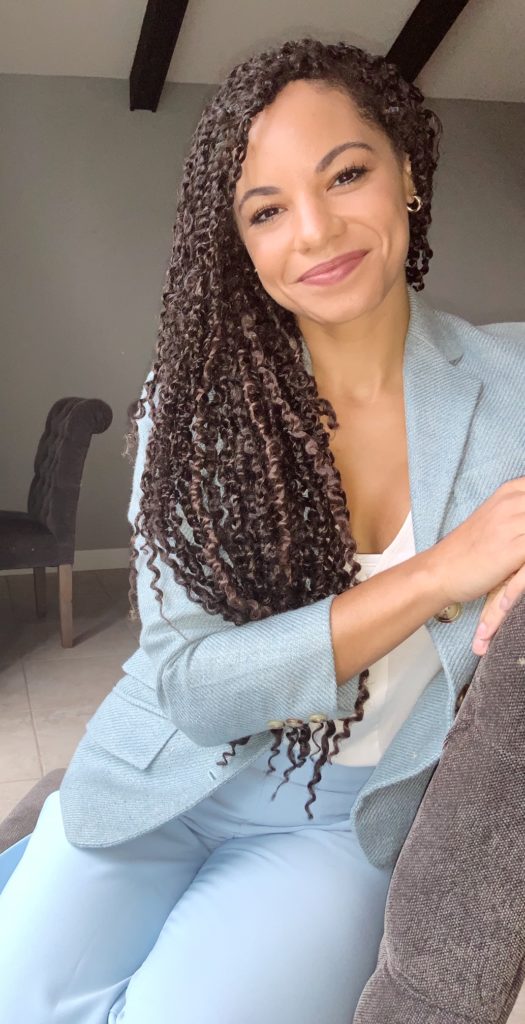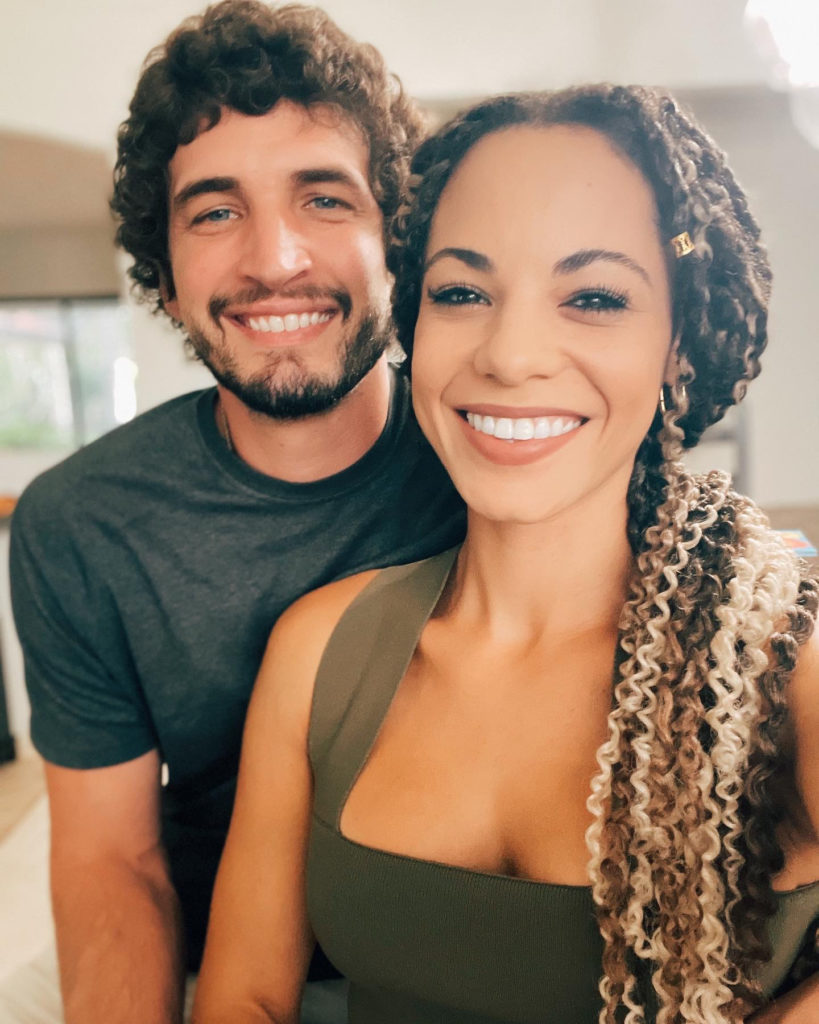A first-person examination of one local woman’s experiences and insights about growing up a biracial adoptive child in a white family, facing both intentional and unintentional discrimination, and struggling to understand her place in the world.
 I am adopted and was raised in Ocala. My amazing, supportive and loving adoptive family worked hard to provide me with the necessary social and emotional tools required to build a really good life. My mom still tells me to this day, “My goal as a mother was to make sure you always knew how much you were loved by a family who will always be there for you.”
I am adopted and was raised in Ocala. My amazing, supportive and loving adoptive family worked hard to provide me with the necessary social and emotional tools required to build a really good life. My mom still tells me to this day, “My goal as a mother was to make sure you always knew how much you were loved by a family who will always be there for you.”
If you were lucky enough to have a mom like mine, then you will understand how I felt this level of unwavering love and stability in every bone in my body. Even though my adoptee brain makes it difficult for me to process why someone would choose to love me, the continued reassurance, backed by constant action, gave me extra bursts of strength when I needed them most. Because of this framework, I grew, and I learned, and I began to find my way in this world.
My adoption was never something that was hidden from me, but I was also aware from an early age that I looked very different from my family. I never viewed my differences as necessarily good or bad; I simply recognized them as differences and tried not to let them affect me.
Skin Deep
It wasn’t until around the fourth grade that I felt like, overnight, I morphed into the mixed elephant in the room and I became fully aware of how loudly my appearance was speaking for me before I ever actually spoke. I started to physically feel the tension during certain interactions and began to notice that my features were affecting the way people not only felt about me but the way they treated me.
I’m not sure exactly when or why the questions shifted from my mom to me, but I do know that I rarely had acceptable answers for people who wondered why I looked, acted or sounded the way I did. The more questions I received and the more frequent they became, the more I began to dread being around people who didn’t already know my “situation.” This led to my feeling like the best way to defend myself was to blend in and stay silent. For so long, I’ve fought to make others feel comfortable in my presence at the expense of honoring myself and my own comfort. I even made up stories to tell complete strangers in order to explain and defend myself against comments on my hair, my voice and my skin color—when the truth would not suffice. I know now that these comments were microaggressions that came from being unable to fit me into a white or Black box, no matter how hard someone tried.
I began to realize that the way I looked stirred up a lot of turmoil inside of certain people, some who simply couldn’t stomach the idea of a biracial person (I didn’t, at the time, even know this is what I was) living what they deemed to be a “white” life. Being biracial comes with a lot of warning labels—but, unfortunately, no instruction manual.
Hidden Figures
As a biracial adoptee, more layers of uncertainty are added to this uneven terrain of life experiences. Unanswered, the questions that plagued me festered into a paralyzing mix of anxiety and irrational fear that everyone I met believed I was worth absolutely nothing. I also felt pressured to share deeply personal stories surrounding the mystery of my adoption to unfamiliar faces because I didn’t have any solid information on how I came to be. As I reflect on the behavior and actions of these people, so desperate to know exactly how much of which ingredients were used in my making, I believe that it all implied one single question: Why are you like this?
After learning about my ethnic background through DNA tests as an adult, having children of my own, and a husband—whose love for me is so unwavering that it has dismantled many of those layers of deep-seeded doubt and self-hate—I finally understand that the way people feel about my appearance says much more about them than it does about me.
A Question of Intention
So how can we tell the difference between unintentional ignorance versus blatant bias? What are we supposed to say when we aren’t sure if someone is truly racist or perhaps just uneducated about specific issues related to race? How do we respond to “well-meaning” oppressive words and assumptions? How do we react when we don’t know the intention of a friend, family member or co-worker who consistently shares targeted stories on social media that degrade minority groups?
I know there are no easy answers to the question of how to eliminate prejudice stemming from fear and bias or even a lack of good information. But I do know that taking every opportunity I get to share my perspective and potentially expand the conversation is worth taking.
 While I realize it’s not my job or anyone else’s responsibility to try and dissect and calmly understand someone who is spewing hate like a broken fire hydrant, I also know that not all prejudicial behavior is born out of hate and when you can talk to someone from a place of intention—intention based on a lack of information or by exploring which emotions have been triggered within them—you can address the actual root of the behavior and begin to dismantle the bias. By choosing to empower yourself with knowledge and a strategy of how to confront situations that are pulling us in the wrong direction of history, it’s possible to do what’s right while also honoring yourself and others. If we truly hope for social change, then confronting derogatory and stereotypical behaviors, words and beliefs is a positive way to start the conversations necessary to address these feelings and empower ourselves to change our world.
While I realize it’s not my job or anyone else’s responsibility to try and dissect and calmly understand someone who is spewing hate like a broken fire hydrant, I also know that not all prejudicial behavior is born out of hate and when you can talk to someone from a place of intention—intention based on a lack of information or by exploring which emotions have been triggered within them—you can address the actual root of the behavior and begin to dismantle the bias. By choosing to empower yourself with knowledge and a strategy of how to confront situations that are pulling us in the wrong direction of history, it’s possible to do what’s right while also honoring yourself and others. If we truly hope for social change, then confronting derogatory and stereotypical behaviors, words and beliefs is a positive way to start the conversations necessary to address these feelings and empower ourselves to change our world.
Editorial note: This first-person account represents the unique experiences and world view of one individual from our community. If you have a perspective you would like to share, please submit a brief statement explaining what makes your story unique by emailing us at editorial@ocalastyle.com
Changing The Conversation
These suggestions are presented to hopefully remind us all of some potential strategies to open doors toward more understanding and inclusive interactions.
Build a bridge.
Even if someone is displaying inappropriate behaviors regarding race, it is possible they may not be aware of what makes the behavior (or their question/phrasing) objectionable. We each come from a different background and set of life experiences, even when we live in the same community. Expanding the divide any further is what we want to avoid. Instead, explain your point of view using relatable examples, feelings and emotions to anchor your words and build a bridge of connection. Try sharing your personal experiences and explain how certain words and actions make you feel uncomfortable and are not inclusive.
Ask answerable and sensitively constructed questions.
Questions can lead to conversation and, when structured responsibly, can open hearts and minds. Questions also express thoughtful consideration and can show you are trying to meet people where they are and understand. Ask questions that express your concern with specific actions or words and which also open the door for empathy and understanding. And, leave the door open for similar discussions in the future.
Be your best self no matter the medium.
The online world has become a place of hostility and divisive behavior, allowing us to say things we wouldn’t necessarily say to someone face to face. Even if you don’t like someone else’s views, lifestyle or what they are putting out there, that doesn’t mean you have to respond negatively. There’s always a respectful option in replying or commenting. The best thing to do when you feel like lashing out is to simply refrain from doing so. Perspectives are not changed through attacks. Instead, choose a proactive way to present your beliefs and open the door for conversation.
Lead by example.
Openly volunteering and donating to groups or organizations that support diversity and inclusion are great ways to lead by example. This also garners an opportunity to further the group’s message and discuss what they’re doing and how they are helping our community.
Editor’s note: An example of just such a local group would be the Racial Harmony and Cultural Awareness Task Force. The group’s mission is to promote a community of inclusiveness while celebrating racial and cultural heritage, and also promote racial harmony by encouraging appreciation and respect for cultural differences.






